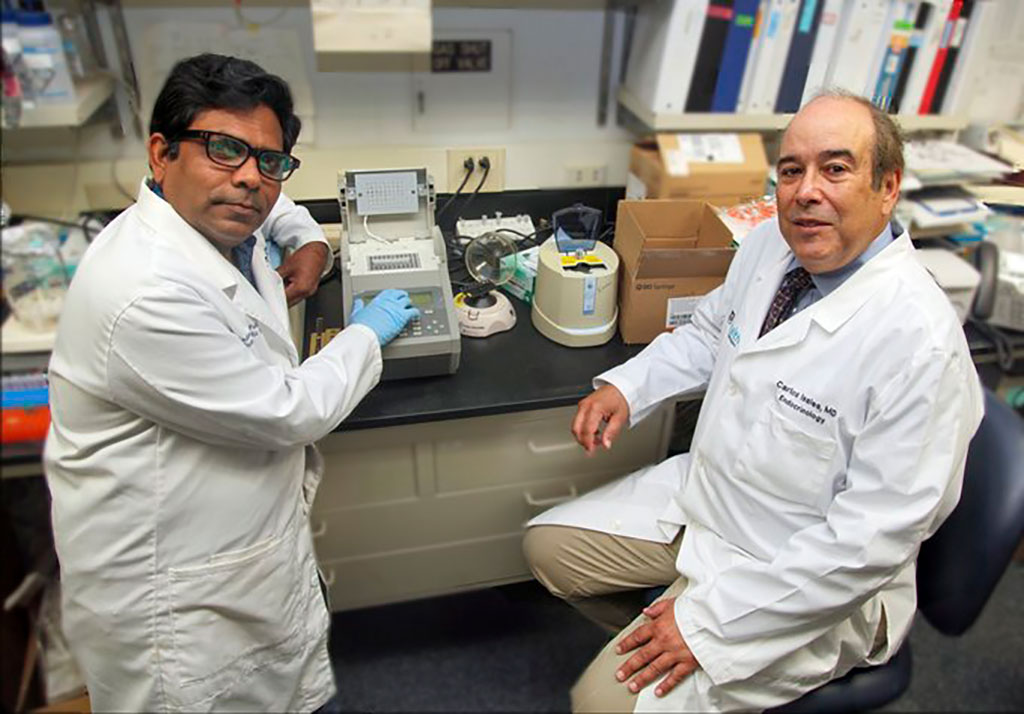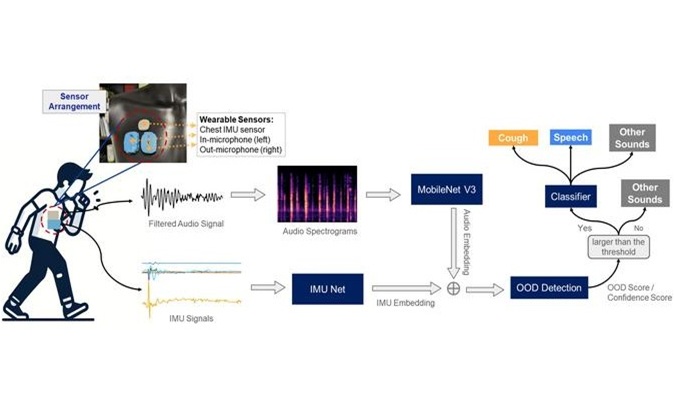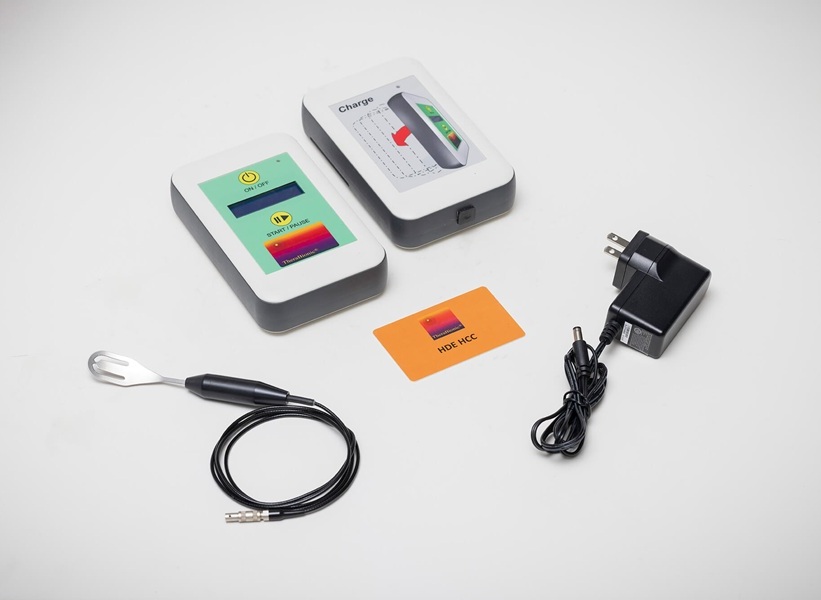MicroRNA ‘Nose Cocktail’ Could Help Fight COVID-19
|
By HospiMedica International staff writers Posted on 18 May 2020 |

Image: Drs. Carlos Isales and Sadanand Fuzele (Photo courtesy of Augusta University)
Researchers have found that a group of tiny RNA which should attack the virus causing COVID-19 when it tries to infect the body diminishes with age and chronic health problems, possibly explaining why older individuals and those with pre-existing medical conditions are vulnerable.
According to researchers from the Medical College of Georgia at Augusta University (Augusta, GA, USA), microRNAs play a significant role in the human body in controlling gene expression and also act as a front line when viruses invade, latching onto and cutting the RNA, the genetic material of the virus. However, the number of attacking microRNAs dwindles with age and due to chronic medical conditions, thus reducing human ability to respond to viruses. This reduction in the key microRNAs involved in responding to the coronavirus allows it to hijack human cell machinery more easily in order to replicate.
In order to identify the key microRNAs and ways to increase their numbers, the researchers studied the RNA sequence of SARS, which surfaced in 2002, and SARS-CoV-2, which causes COVID-19, and the sequence of the microRNAs that appeared to be attacking the virus. The team then used computer simulation to figure out which would logically fit together like puzzle pieces. They examined four samples of SARS and 29 samples of SARS-CoV-2, taken between January and April 2020 from five continents covering 17 countries from the US to Germany to Thailand.
The researchers found 848 microRNAs that target the SARS genome and 873 microRNAs that target SARS-CoV-2 genome. They found 558 of the microRNAs fighting SARS also present in SARS-CoV-2, while 315 microRNAs were unique to SARS-CoV-2, and 290 were unique to SARS. MicroRNAs most proficient at attacking SARS-CoV-2 showed more than 10 target sites and might ultimately be found to be the most proficient at fighting the virus. They also found the microRNAs targeting SARS-CoV-2 were associated with more than 72 biological processes — from the production of molecules to the immune response — and that many are known to become dysregulated and/or diminish in number with age and with underlying medical conditions like diabetes and cardiovascular disease, a likely factor in the increased disease presentation and death rates seen in these individuals, according to the researchers. In the 29 worldwide samples of SARS-CoV-2, 19 had identical microRNAs, which indicates the virus has a fairly uniform presence internationally and that any effective treatments or vaccines should have broad impact.
The researchers suggest that administering cocktails of multiple key microRNA through the nose could help restore sufficient levels of the key virus fighters. The researchers are now moving toward producing synthetic microRNA that could supplement this frontline weakened by age or disease. Future studies also include pinning down which microRNA would be most impactful as an adjunct therapy, for example with the drug remdesivir, under study now for COVID-19, which works to stop the virus’ pirating of healthy cell machinery.
“My perspective is there is a key set of microRNAs that are important in triggering this abnormal response, in making older patients more susceptible,” said Dr. Carlos M. Isales, co-director of the MCG Center for Healthy Aging and chief of the MCG Division of Endocrinology, Diabetes and Metabolism. “We are looking at microRNAs in general dropping, but there is a specific subset that is key. The question is whether we can we target those as a therapy.”
Related Links:
Augusta University
According to researchers from the Medical College of Georgia at Augusta University (Augusta, GA, USA), microRNAs play a significant role in the human body in controlling gene expression and also act as a front line when viruses invade, latching onto and cutting the RNA, the genetic material of the virus. However, the number of attacking microRNAs dwindles with age and due to chronic medical conditions, thus reducing human ability to respond to viruses. This reduction in the key microRNAs involved in responding to the coronavirus allows it to hijack human cell machinery more easily in order to replicate.
In order to identify the key microRNAs and ways to increase their numbers, the researchers studied the RNA sequence of SARS, which surfaced in 2002, and SARS-CoV-2, which causes COVID-19, and the sequence of the microRNAs that appeared to be attacking the virus. The team then used computer simulation to figure out which would logically fit together like puzzle pieces. They examined four samples of SARS and 29 samples of SARS-CoV-2, taken between January and April 2020 from five continents covering 17 countries from the US to Germany to Thailand.
The researchers found 848 microRNAs that target the SARS genome and 873 microRNAs that target SARS-CoV-2 genome. They found 558 of the microRNAs fighting SARS also present in SARS-CoV-2, while 315 microRNAs were unique to SARS-CoV-2, and 290 were unique to SARS. MicroRNAs most proficient at attacking SARS-CoV-2 showed more than 10 target sites and might ultimately be found to be the most proficient at fighting the virus. They also found the microRNAs targeting SARS-CoV-2 were associated with more than 72 biological processes — from the production of molecules to the immune response — and that many are known to become dysregulated and/or diminish in number with age and with underlying medical conditions like diabetes and cardiovascular disease, a likely factor in the increased disease presentation and death rates seen in these individuals, according to the researchers. In the 29 worldwide samples of SARS-CoV-2, 19 had identical microRNAs, which indicates the virus has a fairly uniform presence internationally and that any effective treatments or vaccines should have broad impact.
The researchers suggest that administering cocktails of multiple key microRNA through the nose could help restore sufficient levels of the key virus fighters. The researchers are now moving toward producing synthetic microRNA that could supplement this frontline weakened by age or disease. Future studies also include pinning down which microRNA would be most impactful as an adjunct therapy, for example with the drug remdesivir, under study now for COVID-19, which works to stop the virus’ pirating of healthy cell machinery.
“My perspective is there is a key set of microRNAs that are important in triggering this abnormal response, in making older patients more susceptible,” said Dr. Carlos M. Isales, co-director of the MCG Center for Healthy Aging and chief of the MCG Division of Endocrinology, Diabetes and Metabolism. “We are looking at microRNAs in general dropping, but there is a specific subset that is key. The question is whether we can we target those as a therapy.”
Related Links:
Augusta University
Latest COVID-19 News
- Low-Cost System Detects SARS-CoV-2 Virus in Hospital Air Using High-Tech Bubbles
- World's First Inhalable COVID-19 Vaccine Approved in China
- COVID-19 Vaccine Patch Fights SARS-CoV-2 Variants Better than Needles
- Blood Viscosity Testing Can Predict Risk of Death in Hospitalized COVID-19 Patients
- ‘Covid Computer’ Uses AI to Detect COVID-19 from Chest CT Scans
- MRI Lung-Imaging Technique Shows Cause of Long-COVID Symptoms
- Chest CT Scans of COVID-19 Patients Could Help Distinguish Between SARS-CoV-2 Variants
- Specialized MRI Detects Lung Abnormalities in Non-Hospitalized Long COVID Patients
- AI Algorithm Identifies Hospitalized Patients at Highest Risk of Dying From COVID-19
- Sweat Sensor Detects Key Biomarkers That Provide Early Warning of COVID-19 and Flu
- Study Assesses Impact of COVID-19 on Ventilation/Perfusion Scintigraphy
- CT Imaging Study Finds Vaccination Reduces Risk of COVID-19 Associated Pulmonary Embolism
- Third Day in Hospital a ‘Tipping Point’ in Severity of COVID-19 Pneumonia
- Longer Interval Between COVID-19 Vaccines Generates Up to Nine Times as Many Antibodies
- AI Model for Monitoring COVID-19 Predicts Mortality Within First 30 Days of Admission
- AI Predicts COVID Prognosis at Near-Expert Level Based Off CT Scans
Channels
Critical Care
view channel
Origami Robots to Deliver Medicine Less Invasively and More Effectively
Delivering medicine to ulcers or other internal sites often requires invasive procedures that can disrupt surrounding tissues and lengthen recovery times. Traditional magnetic actuators used in soft robotics... Read more
Improved Cough-Detection Technology Aids Health Monitoring
Coughing serves as an important biomarker for tracking a variety of conditions and can help monitor the progress of respiratory diseases or predict when someone’s asthma is being exacerbated.... Read moreSurgical Techniques
view channel
Novel Glue Prevents Complications After Breast Cancer Surgery
Seroma and prolonged lymphorrhea are among the most common complications following axillary lymphadenectomy in breast cancer patients. These postoperative issues can delay recovery and postpone the start... Read more
Breakthrough Brain Implant Enables Safer and More Precise Drug Delivery
Delivering medication directly to specific regions of the brain has long been a major challenge in treating neurological disorders. Current implants and infusion systems typically reach only one or two... Read morePatient Care
view channel
Revolutionary Automatic IV-Line Flushing Device to Enhance Infusion Care
More than 80% of in-hospital patients receive intravenous (IV) therapy. Every dose of IV medicine delivered in a small volume (<250 mL) infusion bag should be followed by subsequent flushing to ensure... Read more
VR Training Tool Combats Contamination of Portable Medical Equipment
Healthcare-associated infections (HAIs) impact one in every 31 patients, cause nearly 100,000 deaths each year, and cost USD 28.4 billion in direct medical expenses. Notably, up to 75% of these infections... Read more
Portable Biosensor Platform to Reduce Hospital-Acquired Infections
Approximately 4 million patients in the European Union acquire healthcare-associated infections (HAIs) or nosocomial infections each year, with around 37,000 deaths directly resulting from these infections,... Read moreFirst-Of-Its-Kind Portable Germicidal Light Technology Disinfects High-Touch Clinical Surfaces in Seconds
Reducing healthcare-acquired infections (HAIs) remains a pressing issue within global healthcare systems. In the United States alone, 1.7 million patients contract HAIs annually, leading to approximately... Read moreHealth IT
view channel
Printable Molecule-Selective Nanoparticles Enable Mass Production of Wearable Biosensors
The future of medicine is likely to focus on the personalization of healthcare—understanding exactly what an individual requires and delivering the appropriate combination of nutrients, metabolites, and... Read moreBusiness
view channel
Philips and Masimo Partner to Advance Patient Monitoring Measurement Technologies
Royal Philips (Amsterdam, Netherlands) and Masimo (Irvine, California, USA) have renewed their multi-year strategic collaboration, combining Philips’ expertise in patient monitoring with Masimo’s noninvasive... Read more
B. Braun Acquires Digital Microsurgery Company True Digital Surgery
The high-end microsurgery market in neurosurgery, spine, and ENT is undergoing a significant transformation. Traditional analog microscopes are giving way to digital exoscopes, which provide improved visualization,... Read more
CMEF 2025 to Promote Holistic and High-Quality Development of Medical and Health Industry
The 92nd China International Medical Equipment Fair (CMEF 2025) Autumn Exhibition is scheduled to be held from September 26 to 29 at the China Import and Export Fair Complex (Canton Fair Complex) in Guangzhou.... Read more

















